The ultimate guide to woodfire cooking
It’s the ultimate outdoor cooking experience, but getting it right is no easy feat. Campfire cooking aficionado Tim Gent shares his tips for a creating great campfire fodder
Sometimes, perhaps too often, we’re just not allowed to light a fire. Then there are situations such as drought, when even the most experienced outdoor type would hesitate before putting a match to kindling. Anywhere with the flammable peaty soils of many upland and moorland settings should also be approached with great care. A fire lit here has the grim potential to ignite the very ground you’re stood on.
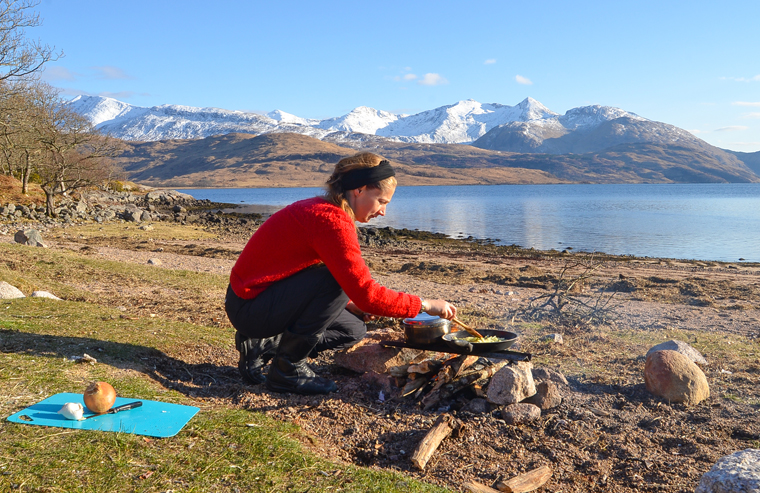
A very pleasant camp kitchen indeed
But there are many circumstances when a small fire, lit to cook, is not only safe and appropriate, but offers the chance to experience one of the most significant acts in our evolution and development. I for one would be appalled if this opportunity were lost.
I suspect that the key reason many campers choose a canister of gas over a small heap of renewable and carbon-neutral sticks, is that they’ve not been shown how to use them. I’ve often heard gas described as so much easier. This may be true of course, but at what cost? And I’m not just thinking of the environment. Cooking over a wood fire helps shift us back in balance with our world. And it’s fun! Here’s how to do it.
Foraging for fuel
While I’ve burnt all sorts over the years, wood is our principal fuel. For various reasons, this is best collected only from the ground.
First things first – there is simply no need to burn large pieces of wood to cook. Most woodland is filled with windfall – dead twigs and small branches, and flotsam usually lines the upper edge of beaches and riverbanks. We often cook with wood no larger than 1½ inch (4cm) in diameter, most much smaller. Slightly larger pieces, maybe to 3 inches (8cm) or so, are used only to build deep ember beds or to slow down the need to stoke.
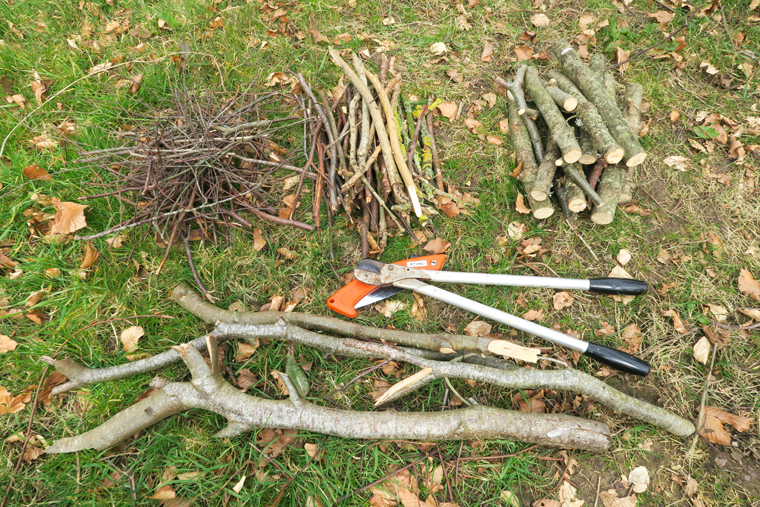
Look for wood with a good snap
Dry wood is easy to identify. If it bends, discard it. Look instead for something that breaks with a good snap. The best windfall will be hung up somewhere, dry but not rotten, caught perhaps on bushes or in low branches. And don’t worry if it does feel a little rotten. It will only burn quicker. Just ensure these older gleanings aren’t damp too.
And much as you may relish the idea of striding into the forest, your trusty axe slung over your shoulder, a good bow saw will be much easier, and safer, for cutting thin fallen branches into usable lengths. Besides, most of the twiggy stuff can be broken by hand. I often use only a folding pruning saw, and I’ll go so far as to suggest that to provide a cooking fire with fuel, this portable saw, with perhaps the addition of a pair of garden loppers, will provide the most practical tool in most conditions.
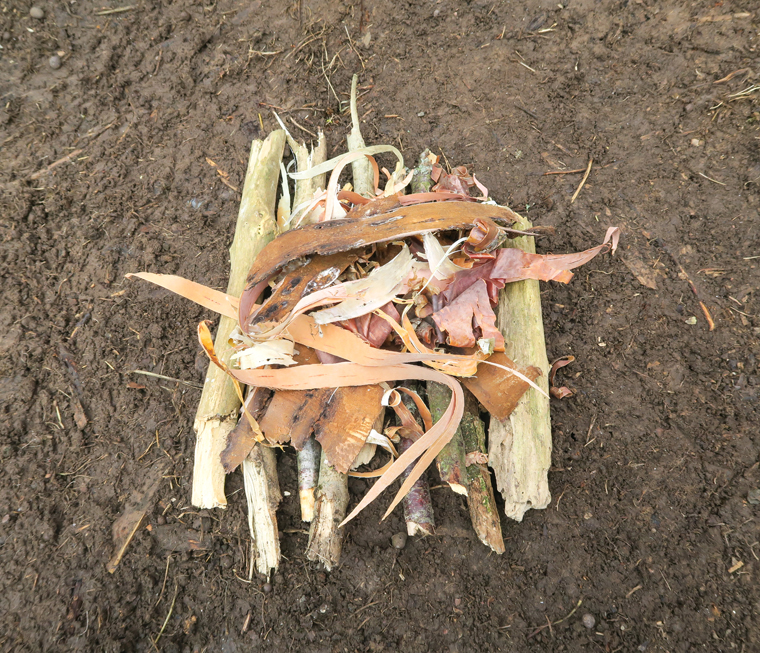
Before you do anything with your cleared area, gather lots of dry fuel, ranging from the smallest wispiest stuff, to a few thin branches. Place these in a pile, or better still, graded piles, on the up-breeze side of where you want your fire. Dropped at an arm’s length or so from where you’ll kneel, these are within reach, but safe from accidental combustion. Then, make a little bed for your baby fire to lie on… seriously.
Using short lengths of dry twig, lay a handful close together to form a mat. This will help keep your tinder dry, insulate the infant fire from the cold ground below, and itself burn to help provide a good bed of embers – the principal aim for cooking.
While you can experiment with a host of natural tinders to light a fire, there’s nothing wrong with scrunched-up paper. If there’s one ‘traditional’ tinder I’d like to mention, it’s birch bark. Filled with extraordinarily flammable natural oils, this is by far my favourite fire-lighting material. Once ready, just hold a lit match near the thinnest papery edge.
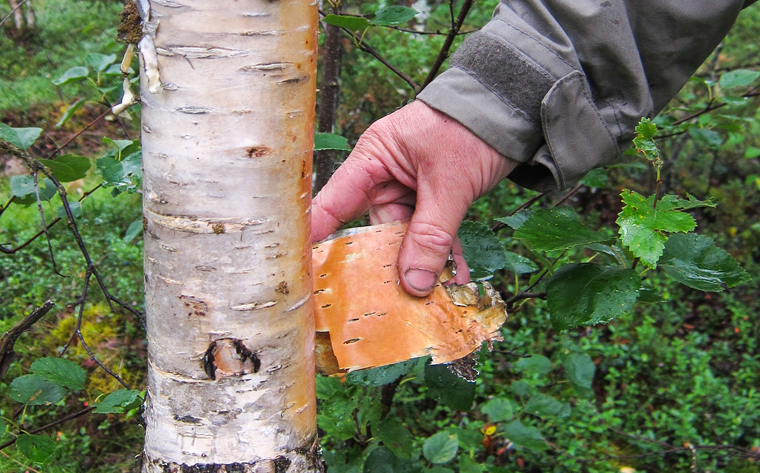
Birch bark, a really good firelighting tinder
For the fire itself, build a good nesty bundle of very thin completely dry stuff over your tinder (pictured left). This can be all sorts – wood shavings, twigs, dead leaves, dried cow parsley stems, bracken and suchlike. Just leave a space to reach your tinder with the match.
While building, try to think like a flame. Make sure there’s enough room for the flame to move, and the all-important air to get in. But at the same time, ensure your bundle of fuel is not all so loose that the flame has nothing to bite into. Judging this will take a little practice.
Location, location, location
My favourite spots are sand and shingle beaches or riverbanks. Cooking close to water is obviously good from a safety perspective. Importantly, these surfaces are also fireproof and easy to clean. Most woodland settings are fine too. Just keep as far from vegetation as possible. And remember, heat rises – a long way – and it’s all too easy to singe twigs and branches overhead.
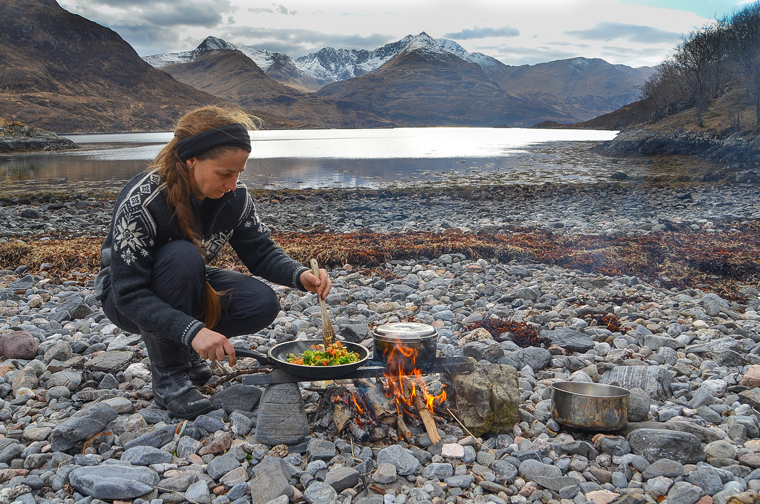
Beaches make for good kitchens
Wherever you choose, a little preparation boosts safety and, importantly, helps you leave the area as you found it. On sand or shingle, start by producing a slight depression, a forearm or so in length and a little over a hand’s-breadth wide. In the woods, combustible leaves and other vegetable matter need to be skimmed clear first, exposing the bare soil. Aim for at least a hand’s-breadth clearing around your shallow scoop.
All lit up
While flint-and-steel, firelighting bows and other mysteries of the fire lighting art are all very well, and great fun for the initiated, if you want to add colour to your sausages I suggest you use a box of matches. I carry a fire steel as a means of insurance, but light almost all my fires with a match.
Once lit, go slowly. Don’t be in a rush to lob on any big stuff. Just add the smallest twiggy bits gently to feed your fire as it starts to take hold. Once you’re sure it’s properly alight, add slightly larger twigs.
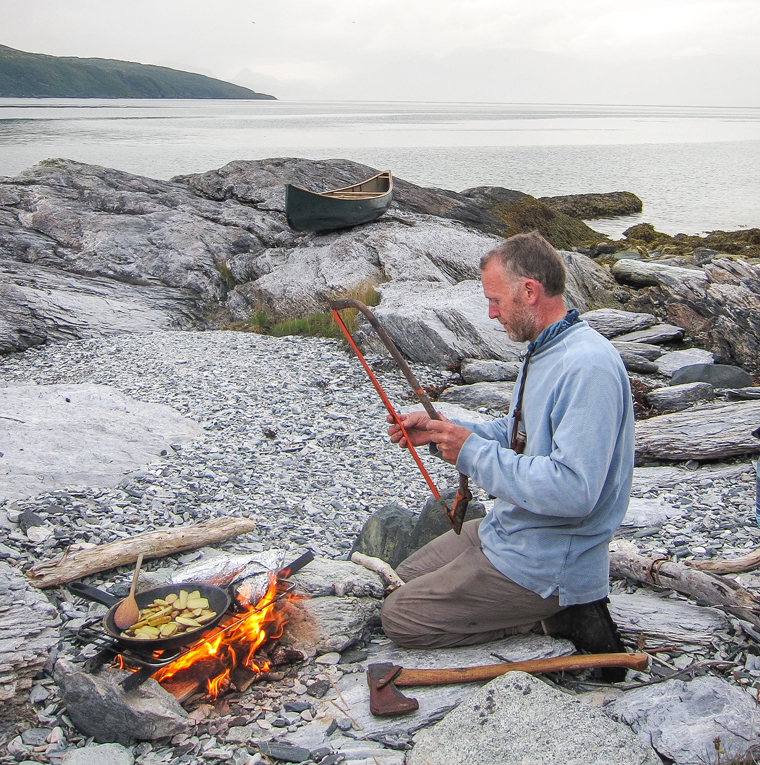
If everything begins to look a little reluctant, return to the very thinnest stuff for a while, perhaps with the addition of a gentle and encouraging blow, aimed at any glowing areas (just make sure you keep hair and eyebrows out of the way). Once properly alight, keep working patiently until you have proper blaze before adding the bigger stuff, aiming for that good ember bed.
In terms of size, your fire need never be much larger than the base of your cooking vessel. If you want a pot and a pan on the go at the same time, extend the fire in one direction to sit beneath both.
Down to (cooking) business
There are many ways to hold a cooking vessel over a fire, and you can enjoy many hours, even days, experimenting. We usual employ fire irons. Ours are two lengths of 20mm (¾in) thick mild steel angle iron. Cut from an old trailer, they’re 70cm (just over 2ft) long. That seems about right, and the angle iron doesn’t buckle or bend in the heat.
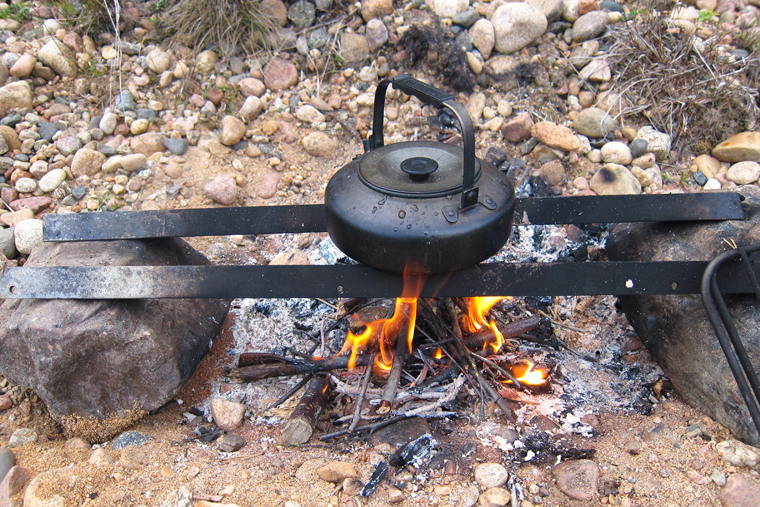
You really can cook using very small twigs and branches, and very small fires
Propped on a pair of flat-topped stones, these irons provide stable support for one or two pots. If one pan or pot is smaller than the other, or we want to boil a kettle, all we have to do is push the irons closer together at one end (using a stick to avoid being burnt). Should you need to grill something, an old wire cooker shelf can be rested on top. These fire irons are also very easy to transport, nestled one inside the other. The only slight drawback is that they can be a little sooty.
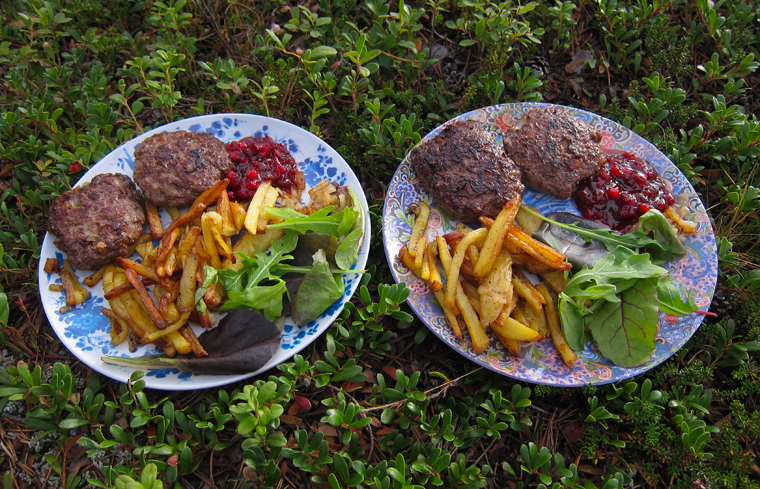
All cooked over a wood fire
For the cooking itself, you can regulate heat by moving your pan away from, or back over, the hotter embers. Add fresh small fuel for more flame if you want to boil water or fry a little quicker. It can be very helpful to have a slightly extended fire, with one end kept lively and hot, the other left to die down a touch.
